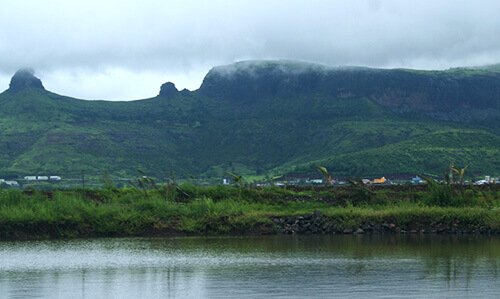As Kumbhaka is important in Pranayama, so also the Tribandha. We have studied the Bandhas earlier. It is necessary to practice Jalandhar Bandh, Uddiyan Bandh and Mul Bandh while studying Pranayam. When the Pranayama is to be practiced for increased duration, the use of these three bandhas is unavoidable. If Kumbhaka is observed without the bandhas, it may be detrimental to health. This has happened before, hence before studying the Pranayama technique, the bandhas should be studied in detail and it should also be learnt how the bandhas should be used while performing Pranayama.
While fixing Jalandhar Bandh, we fold the neck a little bit forward. The pressure of the neck is felt on the breath pipe, hence the bandh is not observed while inhaling or exhaling, but after inhaling i.e after Pooraka and it should be released before exhaling i e after Rechaka. That means the bandh is fixed while being in Kumbhaka. After Pooraka, while being in Kumbhaka, when this bandh is performed, it is used for stopping the inhaled air from going out. The bandh also exerts pressure on Carotial Sinus and also tries to reduce the blood pressure. If internal Kumbhaka is observed without this Jalandhar Bandh, there is a fear of increasing the blood pressure. This risk is eliminated by performing this bandh. However, the bandh should be released before performing Rechaka.
When Jalandhar Bandh is fixed while in Kumbhaka after performing Pooraka, the pressure of the air in the lungs is increased to considerable extent. This pressure is further increased by performing Uddiyan Bandh. The Uddiyan Bandh also regulates the pressure in an appropriate direction. Both the bandhas must be released while performing Rechaka after Kumbhaka. However, Mul Bandh is to be continuously performed during the practice of Pranayam. In the initial stages, Mul Bandh must be performed during Kumbhaka at least, so that the generated air pressure is kept under proper control.
In short, it means that after Pooraka, the bandhas should be fixed in the order as Jalandhar Bandh, Mul Bandh and then Uddiyan Bandh and they should be released in the reverse order i e Uddiyan Bandh, Mul Bandh and Jalandhar Bandh before performing Rechaka.
We have seen that Pranayam means Kumbhaka. The Kumbhaka can be performed or observed after Pooraka or after Rechaka too. Kumbhaka performed after Pooraka is known as "Abhyantar Kumbhaka" ( Internal Kumbhaka ) and Kumbhaka performed after Rechaka is known as "Bahya Kumbhaka" ( External Kumbhaka ). The main text of Hatha Yoga i.e Hathapradeepika has described eight types of Kumbhakas, however they are all Abhyantar Kumbhakas. No one has given much importance to Bahya Kumbhaka, We will also limit our study of Pranayam to the studies of Abhyantar Kumbhaka.
In the eight types of Kumbhaka described in Hathapradeepika, the three procedures of Pooraka, Kumbhaka and Rechaka (inclusive of three bandhas) are enumerated. The Kumbhaka is of a single type only, however Pooraka and Rechaka are to be performed in different manners. The text states that by changing the method of Pooraka and Rechaka, the effects of Pranayam differ. The pranayama done, by performing Pooraka with the right nostril and Rechaka with the left or Kumbhaka after swift iterations of inhalation or exhalation is of a warm kind and the Kumbhaka performed after inhaling air with mouth while in Pooraka is cold, as is stated by Hathapradeepika. We will not get into the details of all these, but we will study some of the Kumbhaka Pranayamas.
Phone - +91-9822770727
E-mail - yoga@yogapoint.com or yogapoint108@gmail.com

Yoga Vidya Dham, Kaivalya Nagari,
College Road, Nashik - 422005.
Maharashtra, India.
Phone - +91-9822770727 (for courses in ENGLISH)
+91-253-2318090 (For courses, in HINDI or MARATHI)
(Please call during 9.00 AM to 5 PM Indian Time)
E-mail - yoga@yogapoint.co or yogapoint108@gmail.com
Village Talwade, Trimbak, Nasik
Maharashtra,India.
Phone - +91-9822770727
E-mail - yoga@yogapoint.com or yogapoint108@gmail.com
